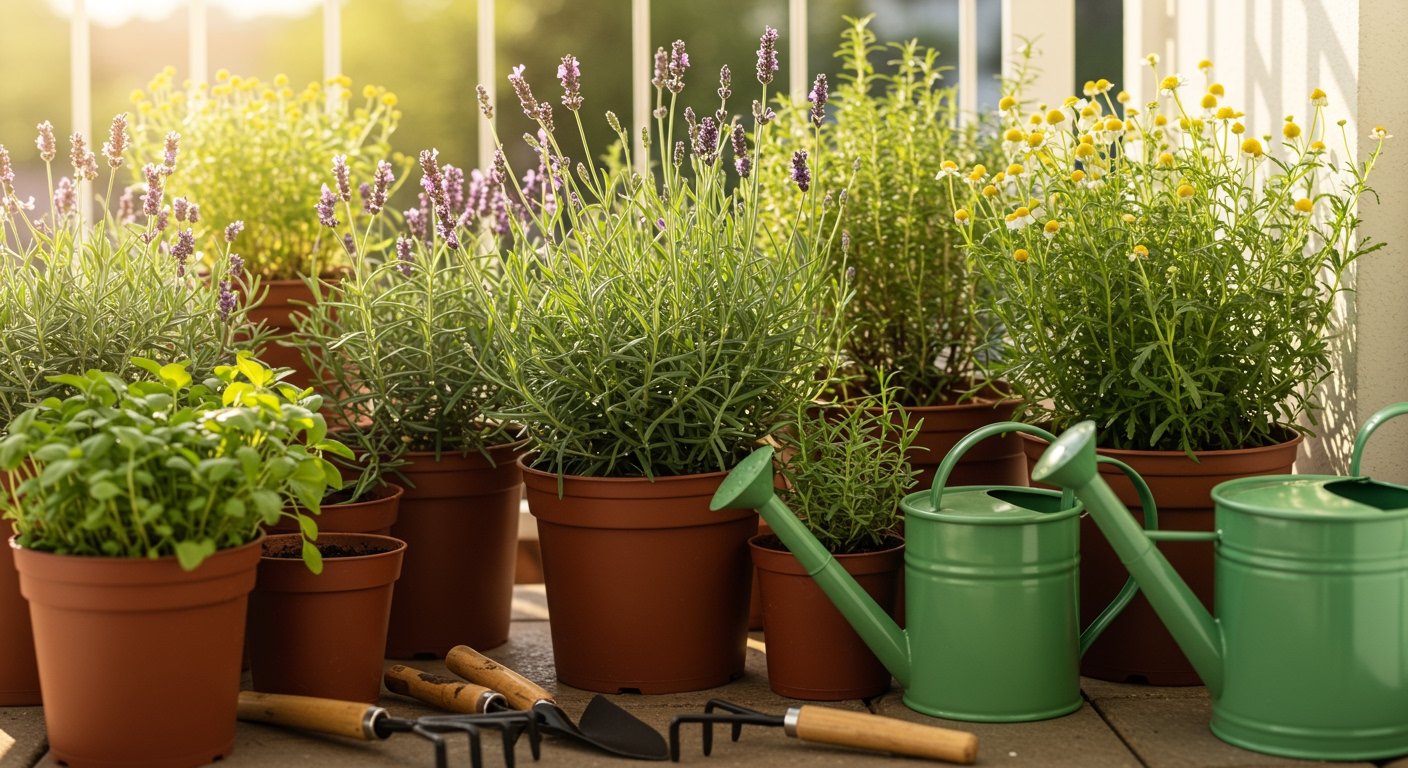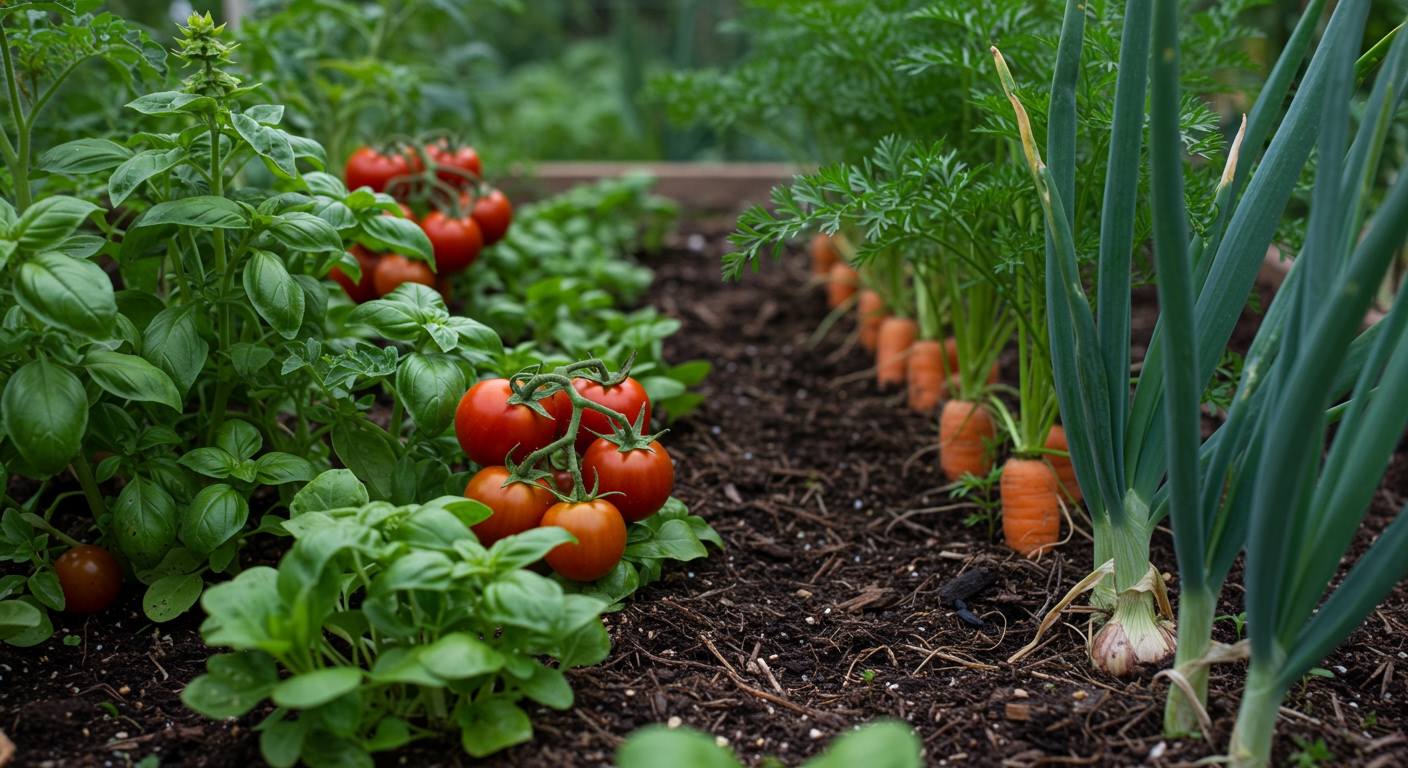Gardening is a deeply rewarding endeavor, a chance to connect with nature and cultivate beauty or sustenance. Yet, the joy of a thriving garden can quickly turn to frustration when common garden pests and diseases strike. From tiny aphids to persistent powdery mildew, these unwelcome guests can decimate plants and dampen spirits. In response, many gardeners are turning away from harsh synthetic chemicals, seeking safer, more sustainable alternatives. This growing problem of garden pests has fueled the allure of organic solutions.
Why choose homemade organic pesticides? The reasons are compelling: safety, sustainability, and cost-effectiveness. By creating your own natural pest control for plants, you protect not only your garden but also your family, pets, and the wider ecosystem. These DIY organic pest control solutions leverage ingredients often found in your pantry, making them an economical choice compared to commercial products. This comprehensive guide will equip you with essential knowledge, detailed recipes for homemade insecticides for garden, and best practices to keep your green space flourishing, naturally.
The Case for Organic: Why Avoid Chemical Pesticides?
While chemical pesticides offer a quick fix, their long-term costs far outweigh the immediate benefits. Understanding these risks is crucial for any gardener committed to a truly healthy garden.
Health Risks to Humans and Pets
Synthetic chemical pesticides pose significant health risks. Exposure, whether acute or chronic, has been linked to a range of severe conditions in humans and pets. These include neurological disorders, various cancers, and developmental delays, particularly in children, whose developing systems are more vulnerable [7]. When you spray your garden with chemicals, those substances don’t just disappear; they can linger on produce, in the soil, and even drift into your home, posing a continuous threat.
Environmental Impact
The environmental footprint of chemical pesticides is equally concerning. They contribute to soil contamination, degrading the very foundation of your garden’s health. Runoff from treated areas can lead to severe water pollution, harming aquatic life and contaminating drinking water sources. Furthermore, these chemicals often indiscriminately harm non-target organisms, including beneficial insects like pollinators, birds, and fish [26].
Impact on Ecosystem
Beyond direct toxicity, chemical pesticides disrupt the delicate balance of the garden ecosystem. They decimate beneficial insect populations, which are natural predators of common pests, thereby creating a vacuum that allows pest populations to rebound even stronger. They also harm crucial soil microorganisms, which are vital for nutrient cycling and plant health. Embracing organic pest control solutions helps maintain a vibrant, self-regulating ecosystem.
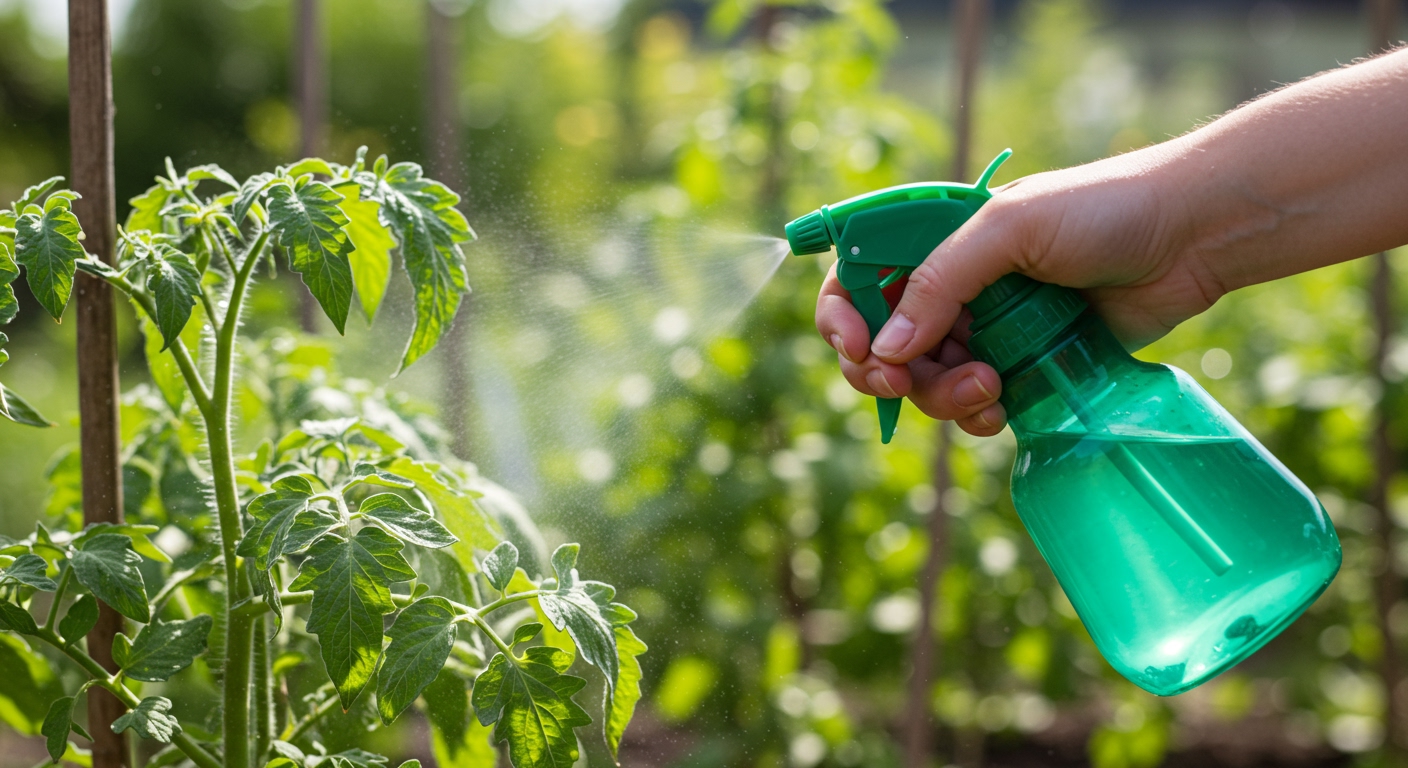
Essential Ingredients for Your Organic Pesticide Arsenal
Building your own arsenal of organic bug spray recipes begins with understanding the power of common, natural ingredients. Here are the staples you’ll need:
- Liquid Soap (Castile Soap, Mild Dish Soap): Not just for dishes, mild liquid soap acts as an emulsifier, helping oil and water mix, and as a suffocant for soft-bodied pests like aphids and spider mites [33]. It breaks down their protective outer layer, leading to dehydration. Ensure you use pure, biodegradable soaps, not harsh detergents.
- Garlic: A potent natural repellent and insecticide. Garlic’s strong odor and sulfur compounds are toxic to various insects and can deter fungi. It’s a key ingredient in many safe homemade pesticides for vegetables.
- Neem Oil: Derived from the neem tree, this natural insecticide, repellent, and anti-feeding agent is a powerhouse. It disrupts insect growth and life cycles, making it effective against a wide range of pests and even some fungal diseases [15]. Always opt for cold-pressed neem oil for maximum efficacy.
- Hot Peppers (Cayenne, Chili): The capsaicin in hot peppers irritates pests, making them an excellent repellent for both insects and larger garden invaders like rabbits and deer.
- Vegetable Oil (Canola, Sunflower, Mineral Oil): Primarily used as a suffocant, vegetable oil coats insects, blocking their breathing pores. It also helps homemade mixtures adhere better to plant surfaces.
- Baking Soda (Sodium Bicarbonate): A simple yet effective fungicide, baking soda spray is particularly good against powdery mildew and other fungal diseases.
- Other Useful Ingredients: Don’t overlook the potential of onions (similar to garlic), mint (repellent), tomato leaves (contain alkaloids toxic to some insects), essential oils (peppermint, clove, orange for strong repellency), milk (antifungal), wood ash (deterrent, nutrient boost), and coffee grounds (deterrent).
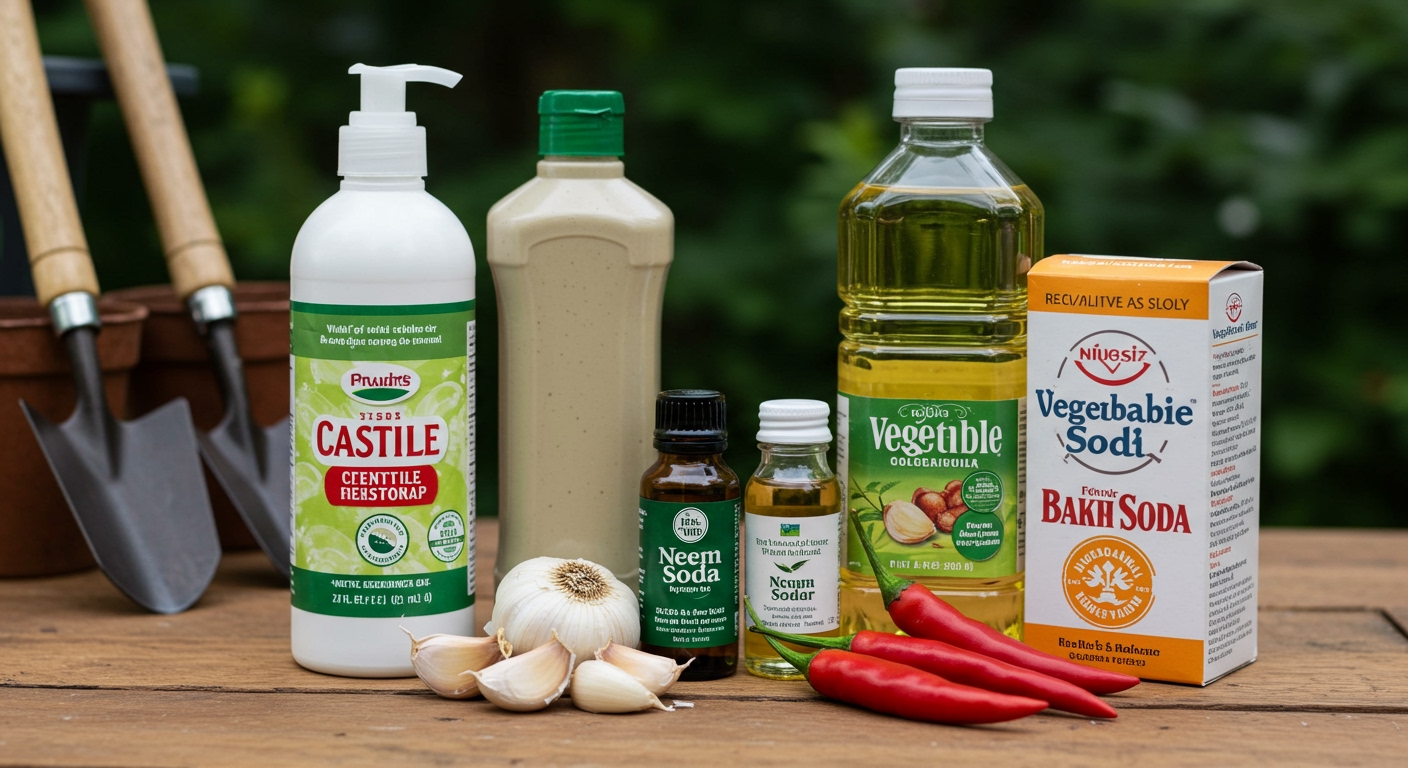
DIY Homemade Organic Pesticide Recipes: A Practical Guide
Ready to get hands-on? Here are some of the most effective DIY natural garden sprays you can make today.
All-Purpose Insecticidal Soap Spray
This is a foundational recipe for tackling many soft-bodied pests. It’s an excellent soap spray for plants aphids, spider mites, and whiteflies.
- Ingredients and Ratios: 1 tablespoon mild liquid soap (Castile soap is ideal), 1 gallon of water. For added efficacy, you can include 1 tablespoon of vegetable oil.
- Targeted Pests: Aphids, spider mites, whiteflies, mealybugs, thrips, scale insects.
- Application Tips: Mix well and pour into a spray bottle. Thoroughly cover all plant surfaces, including the undersides of leaves, where many pests hide. Reapply after rain or every 4-7 days as needed.
Garlic-Based Repellent and Insecticide
A potent natural deterrent, this garlic spray for plants recipe is a must-have.
- Ingredients and Ratios: 2 whole garlic bulbs (peeled and crushed), 1 cup water. Steep overnight. Strain the garlic solids. To the liquid, add 1/2 cup vegetable oil and 1 teaspoon liquid soap. Dilute this concentrate with 1 gallon of water before spraying.
- Targeted Pests: Aphids, cabbage worms, leafhoppers, squash bugs, whiteflies, slugs, nematodes.
- Variations: For an even stronger blend, consider a garlic-onion-pepper mixture, combining the repellent qualities of all three.
Neem Oil Spray for Comprehensive Pest & Disease Control
Neem oil pesticide homemade is incredibly versatile, addressing both insects and fungal issues.
- Ingredients and Ratios: 5 mL (1 teaspoon) cold-pressed neem oil, 2 mL (1/2 teaspoon) mild liquid soap (as an emulsifier), 1 liter (about 1 quart) water.
- Targeted Pests & Diseases: Aphids, spider mites, whiteflies, thrips, mealybugs, various caterpillars, and fungal diseases like powdery mildew and rust.
- Best Practices: Always use cold-pressed neem oil. Mix fresh for each application as it degrades quickly in water. Apply in the early morning or late evening to avoid sun scald and protect beneficial insects. Shake the spray bottle well during application to keep the oil emulsified. Use within 8 hours.
Hot Pepper Spray for Repelling and Irritating Pests
This chilli pepper spray for garden pests is great for deterring larger animals and irritating insects.
- Ingredients and Ratios: 1 tablespoon dried chile powder (cayenne or other hot pepper), 1 quart water, 1 teaspoon mild liquid soap. Steep the pepper in hot water for an hour, strain, then add soap.
- Targeted Pests: Mites, whiteflies, caterpillars, beetles, rabbits, deer.
- Caution: Always wear gloves when handling hot peppers and preparing this spray. Avoid contact with your eyes and skin. Test on a small area of the plant first to ensure no adverse reaction.
Baking Soda Fungicide Spray
An effective baking soda fungicide for plants, particularly for common fungal issues.
- Ingredients and Ratios: 4 teaspoons baking soda, 1 gallon water. You can add 1 teaspoon of mild liquid soap or vegetable oil to help it stick.
- Targeted Diseases: Powdery mildew, black spot, rust. This is a popular organic solution for powdery mildew.
- Application Notes: Spray thoroughly, ensuring coverage on both sides of leaves. Avoid applying in direct hot sun, as it can cause leaf burn. Reapply weekly or after rain for continued protection.
Essential Oil Repellent Blends
Essential oils offer strong aromatic repellency for various pests.
- Ingredients: 10-20 drops total of essential oils like peppermint, clove, cedarwood, lavender, or orange essential oils. Mix with 1 quart of water and 1 teaspoon of dish soap (as an emulsifier).
- Targeted Pests: General deterrent for various insects (ants, mosquitoes, some beetles) and rodents.
Other Notable Homemade Solutions
- Milk Spray for Powdery Mildew: Dilute milk (1 part milk to 9 parts water) and spray weekly. The proteins in milk are believed to have antifungal properties.
- Tomato Leaf Spray for Aphids and Caterpillars: Chop tomato leaves, steep in water overnight, strain, and spray. Tomato leaves contain alkaloids toxic to some pests.
- Wood Ash and Coffee Grounds as Deterrents: Sprinkle wood ash around the base of plants to deter slugs and snails. Coffee grounds can also deter slugs and ants, and add a nitrogen boost to the soil.
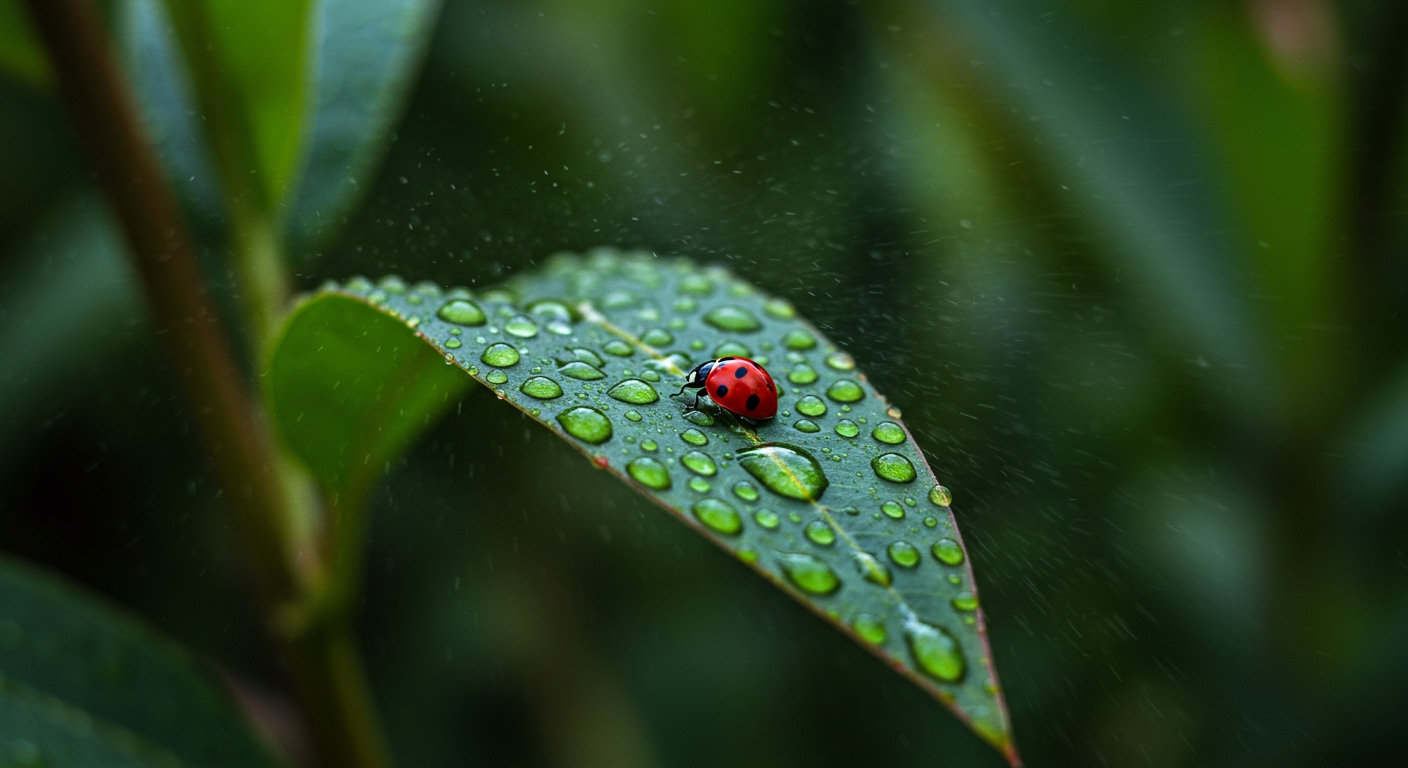
Best Practices for Applying Homemade Pesticides
Even the best organic bug spray recipes require careful application to be effective and safe for your plants.
- Always Perform a Patch Test: Before full application, spray a small, inconspicuous area of your plant and wait 24-48 hours. This checks for plant sensitivity and ensures your solution won’t cause damage [29].
- Proper Dilution: Follow recipes carefully. Over-concentrating even organic solutions can harm plants.
- Timing is Key: Apply in the early morning or late evening. This avoids scorching leaves in direct sunlight and protects beneficial insects, which are less active during these times.
- Thorough Coverage: Pests often hide on the undersides of leaves and in crevices. Ensure you spray all plant surfaces thoroughly.
- Reapplication Frequency: Most homemade organic pesticides are not as persistent as synthetic ones. Generally, reapply every 4-7 days or after rain for continued effectiveness. How often to apply organic pest sprays depends on pest pressure and weather.
- Storage and Shelf Life: Make small batches as many homemade solutions, especially those with garlic or neem oil, lose potency quickly. Store concentrates in a cool, dark place, but ideally, use fresh mixes.
Beyond Sprays: Integrated Organic Pest Management
Effective organic pest control is more than just spraying. It’s about creating a resilient garden ecosystem through Integrated Pest Management (IPM) principles.
- Healthy Plants are Resilient Plants: Well-nourished plants are better equipped to fend off pests and diseases. Focus on proper watering, enriching your soil health with compost, and providing balanced nutrition.
- Companion Planting: Strategically plant certain species together. Some plants naturally deter pests (e.g., marigolds repel nematodes, nasturtiums attract aphids away from other plants), while others attract beneficial insects.
- Attracting Beneficial Insects: Create a hospitable environment for natural predators like ladybugs, lacewings, and parasitic wasps. Plant flowers they love (e.g., dill, fennel, yarrow) and avoid broad-spectrum pesticides that harm them.
- Manual Removal: For larger pests or small infestations, hand-picking pests (like hornworms) or hosing them off with a strong stream of water can be very effective.
Important Cautions and Considerations
While safe homemade pesticides for vegetables and ornamentals are excellent, a few key considerations ensure their safe and effective use.
- Not All Soaps are Equal: Always use mild, pure, biodegradable soaps like Castile soap or pure liquid dish soap. Avoid detergents, antibacterial soaps, or those with degreasers, as these can strip plant waxes and cause damage.
- Avoid Overuse: Even organic solutions can have impacts if used indiscriminately. Monitor your garden and only apply when necessary. Are homemade pesticides safe for plants? Yes, but moderation is still key.
- Identify Pests Correctly: Before applying any treatment, accurately identify the pest or disease. Knowing your enemy allows for targeted and more effective solutions.
- Safety Precautions: Even with natural ingredients, it’s wise to wear gloves, avoid eye and skin contact, and ensure proper ventilation during preparation and application.

Conclusion
Embracing the power of homemade organic pesticides is a transformative step towards cultivating a thriving, chemical-free garden. By understanding the risks of synthetic chemicals and harnessing the potency of natural ingredients, you empower yourself to protect your plants safely and sustainably. From simple soap sprays for aphids to comprehensive neem oil solutions, these DIY organic pest control recipes offer effective alternatives for common garden pests and diseases.
This guide encourages you to embrace a holistic approach to pest control, integrating sprays with good cultural practices like healthy soil, companion planting, and attracting beneficial insects. Your garden is a living ecosystem, and by working with nature, rather than against it, you foster resilience and biodiversity.
We encourage experimentation with these natural pest control for plants solutions and the adoption of sustainable gardening practices. With a little knowledge and effort, you can enjoy a beautiful, productive garden that is safe for everyone and beneficial for the planet.
— END —


